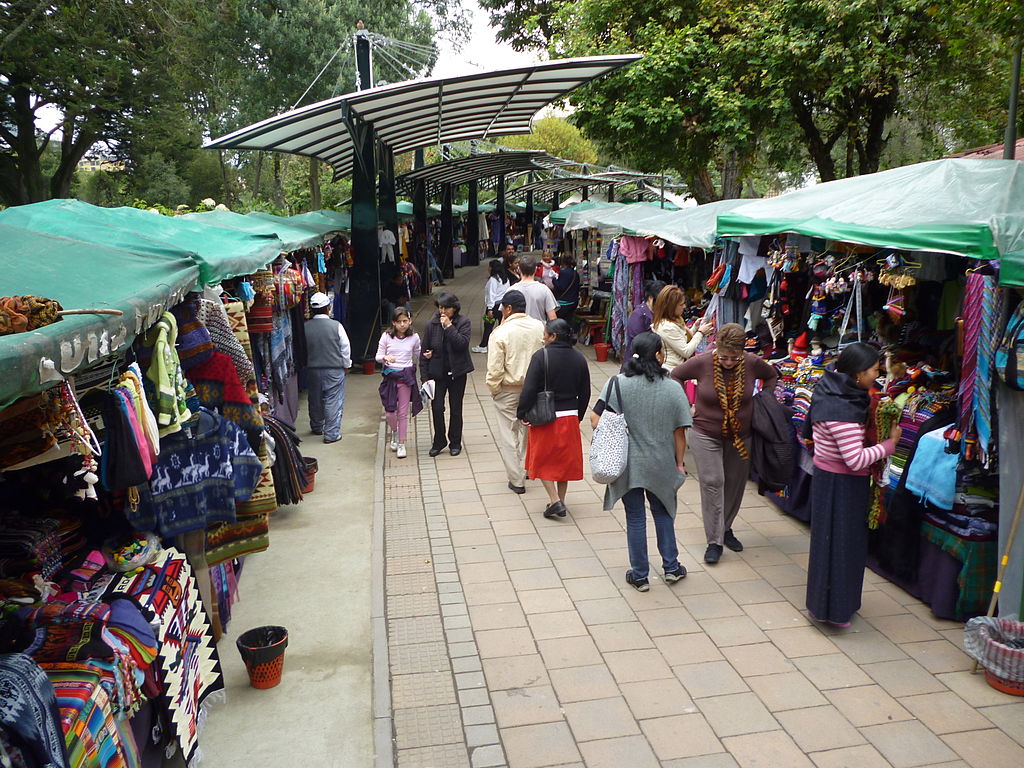
You’ve chosen a name for your business. You’ve designed some wonderful products. Maybe you’ve even built a Facebook page and a Pinterest account especially for marketing your craft business. But how do you know where to sell your products?
There’s much debate amongst craft business owners about where to sell your crafts. Some swear by selling online and only online. Others insist that selling in person works better for them. And even if you already know which method you prefer, there are many different specific options for selling online or in person, so how do you decide amongst those?
Here are some pros and cons of a few online and physical locations for selling your craft products. I hope that this will help you to decide the best place for selling your handmade wares.
1. Online Sales Venues
Online sales venues offer a lot of conveniences, and often fewer costs, that you wouldn’t get selling in a physical location. For instance, selling online doesn’t require paying rent for a shop space or paying a percent of consignment sales. But there can be some negative sides to online selling too, such as Paypal fees.
Etsy
Etsy is a very popular online selling venue with more than 800,000 registered users. The site ranked second in the 2014 Sellers Choice Top Online Marketplaces and also ranked second in overall profitability in the same study, Ebay being the only site ranking higher in profitability.
Advantages of Etsy:
• Low listing fees of $0.20 per item for four months.
• A community of fellow sellers who share tips and ideas.
• User friendly interfacing for buyers and sellers.
• A great reputation for the site worldwide.
Disadvantages of Etsy:
• Slow communication from help desk due to so many users.
• Percentage of sales taken by Etsy.
• More competition with products similar to yours.
• Links and content from other shops is always visible to buyers.
ArtFire
ArtFire is another popular online marketplace for handmade products. While it’s not as popular, it does have some advantages over Etsy.
Advantages of ArtFire:
• Not as much competition as larger handmade sites like Etsy.
• Buyers can post ‘wanted ads’, similar to Etsy’s former ‘Alchemy’ requests, which no longer exists.
• No listing fees for individual products.
• Lots of customization features for your shop.
Disadvantages of ArtFire:
• Less well known site which lacks the reputation of bigger sites like Etsy.
• Monthly fee of $12.95, regardless of if you sell anything in that time.
• Less media attention to the site as a whole.
• Less traffic to individual shops than bigger sites like Etsy.
DaWanda
DaWanda is a German based online marketplace that allows sellers worldwide to create shops and sell their handmade merchandise. It’s another venue that’s gaining popularity fast but still doesn’t rank as high as Etsy when it comes to customer traffic to the site.
Advantages of DaWanda
• No fees taken on postage costs.
• No listing fees for individual items at present (though this could change.)
• Free to create an account and a shop.
• Items can be listed in more than one category at a time.
Disadvantages of DaWanda
• Not as well known as Etsy.
• 5% commission on sales (increasing to 10% in July 2014.)
• Limitations on how much you can change the prices of your listed items.
• Buyers have 7 days to pay for an item that they purchase.
Other online handmade marketplaces you may want to look into include: Folksy, Not on the High Street, Bonanza, Zibbet and iCraft.
Alternatively, many crafters also sell a lot of products using social media and blogging platforms like Facebook, Twitter, Pinterest, Tumbler, Blogger, and WordPress, to name a few of the most popular options. Some people have even found success in selling handmade products on Ebay.
2. Physical selling venues.
Physical selling venues, such as craft fairs, offer some great advantages over online marketplace selling. There are, of course disadvantages too. Here are some pros and cons of various physical selling venues for your handmade products.
Craft Fairs
Craft fairs are one of the most popular physical selling venues for handmade products. But are they actually profitable? Here are some advantages and disadvantages of selling at craft fairs.
What Licenses do Crafters Need to Sell at Craft Shows?
Advantages of Craft Fairs:
• Customers can see your products in person and handle them. They can try things on.
• You can hand out business cards to everyone you meet, even if they don’t buy.
• You can change your prices based on the reactions you get from people looking at your products.
• You can network with crafters, other business owners and potential customers.
Disadvantages of Craft Fairs:
• You will pay a table fee, often ranging anywhere from $20 to $200, depending on the location and venue.
• You may have competition with other tables selling similar products in close proximity.
• You have to present a friendly and professional front at all times–there’s no computer screen to hide behind.
• You have little control over how much marketing gets done for the event.
Local Craft and Gift Shops
Another great option for selling at a physical location is to get your handmade goods into local craft and gift shops. Many local shops are happy to add handmade goods to their stock if you just ask them for more information about the process.
Advantages of Local Shops
• You have the benefit of someone else doing the selling and marketing for you.
• Your goods appear for sale next to other quality products.
• You can network when you leave business cards with your products.
• You can learn more about selling and marketing from the shop owner.
Disadvantages of Local Shops
• You will pay a percentage of the sale to the shop owner– often 40 to 50% of what you charge.
• Small shops don’t always get a lot of regular footfall.
• Items can sometimes become damaged over time from too much handling by customers.
• Items may sometimes get stolen through no fault of your own. You have to trust someone else to guard your goods.
Besides local shops, you can also try marketing your goods to gift and craft shops located outside of your town, state or even the country.
Other physical selling venues you many want to consider for your crafts include: school fairs, church bazaars, bake sales, festivals and concerts, and any other event where you can rent a table or stall.
The post Where To Sell Your Craft Products appeared first on Start a Craft Business.
||-------------------------------------
By: Jaime
Title: Where To Sell Your Craft Products
Sourced From: craftyscrappyhappy.net/where-to-sell-your-craft-products/
Published Date: Fri, 25 Jul 2014 16:49:21 +0000
Did you miss our previous article...
https://coachingbusinessowners.com/startup/looking-to-get-creative






